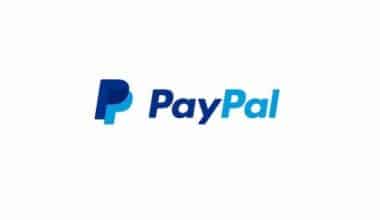Have you ever gone shopping and realized after you left the store that you had spent more money than you had planned? You might have fallen victim to psychological pricing traps; it’s really simple to do. Stores are intentionally designed to entice you to spend more money than you intended through a variety of pricing techniques. Applying the strategies used by retail businesses to pricing in other industries can be quite successful. Let’s examine four of the most common psychological pricing example tactics in more detail so that you may apply them to boost sales and, perhaps, prevent future mall overspending.
What is Psychological Pricing?
The term “psychological pricing” refers to the commercial practice of putting prices below a whole number. Reducing the leftmost digit is done in the hopes that customers will view the marginally reduced price as being significantly lower. When a $3.99 item is presented to the customer as 3 dollars instead of 4 dollars, treating $3.99 as a significantly lower price than $4.00, this is an example of psychological pricing.
This is an explanation of psychological pricing, often known as charm pricing. Additionally, there are psychological pricing techniques that aim to persuade clients to buy more items or pay a higher price.
Psychological Pricing Strategies
Many different psychological pricing strategies exist. Four instances of psychological pricing are shown below, each with benefits and drawbacks:
#1. Unnatural time restrictions
We can practically promise that if you visited any retail location in the past several months, you saw a sign advertising a “one-day only sale” or everything being “50% off!” These “short-term’ deals, which can take place every weekend, always appear to be accompanied by a sense of urgency.
Sales will always exist; that is the secret. If you don’t trust us, simply take a look at how JCPenney did after they removed them. If you consistently utilize this method, your sales won’t have as big of an impact, and your products’ perceived prices will be lower, which is a psychological pricing disadvantage.
#2. Charm pricing
Charm pricing, also known as psychological pricing, is the formal (read: pretentious) name for all those nines you see at the end of prices. Researchers at MIT and the University of Chicago have conducted studies that demonstrate how prices with a nine enhance consumer demand for the goods they sell.
We read from left to right, which causes this psychological phenomenon. When we see a product with a price of $1.99, we focus on the number 1 and assume it is less than $2. In essence, a price that ends in nine persuades them that you are providing a terrific deal. Please feel free to use this pricing theory; if your price is $100, try making it $99 to see if it affects sales.
#3. Innumeracy
Which do you believe to be the better offer? What about “50% off any two items” or “Buy one, get one free”? Even though the two options are identical (buying two items at a 50% discount is the same as paying full price for one and receiving the second free), the majority of people would prefer the first option, according to a study conducted by researchers at the University of Minnesota under the direction of Akshay Rao.
Consumers who are innumerate are unable to recognize or comprehend basic mathematical concepts as they relate to daily life. (You’re being haunted by memories of your high school math classes right now.) Other instances of innumeracy in pricing include percentage pumping, double discounting, and coupon design.
#4. Price Appearance
The way you set your prices can significantly affect how customers view the value of your goods. The next time you eat at a pricey restaurant, pay attention to how they present their prices. The typeface will probably be smaller, and the numbers won’t have extra zeros after them, so “19” rather than “$19.00” would be an example.
The benefits of this kind of design are numerous. Even when the numerical value of a price is the same, consumers believe that longer prices are more expensive than shorter ones. This is so because longer prices take longer to read subconsciously.
Why Psychological Pricing Is Effective
The fact that consumers don’t always know what something should cost is exploited by psychological pricing. The two most common ways we can tell if something is a good deal are to get it for less than it would normally cost or to compare it to similar items in the same category.
Psychological Pricing Example
Whether or not you are aware of it, you have undoubtedly encountered psychological pricing strategies. Here are some examples of some of the tactics we just went over.
#1. Sales following Christmas
The best sales and promotions, especially those for Christmas, usually occur after a holiday. Look at this advertisement that was placed on a shopping website. To start, the advertisement is red. You literally cannot miss it, especially with the word “SALE” glaring at you in all caps.
Here, this company is using a variety of tactics, particularly in numeracy. This one advertisement has a staggering number of figures and equations. Without giving it much thought, my basic conclusion is that there are no offers available.
This company is betting that people won’t do the arithmetic and analyze how good those percentages actually are by putting all these figures out there. Another example of double discounting is this. Customers can use a coupon to earn an additional discount (plus a discount of 20–50%). The majority of customers will mistakenly think that’s one big reduction when, in fact, the additional percentage is deducted from the already-reduced price.
#2. End-of-year clearance
This end-of-year clearance discount advertisement likewise makes extensive use of psychological pricing. This advertisement contains a number that particularly strikes me: “$89.” One of the best examples of charm pricing is this particular price. Given that “90” is almost equal to “89,” the advertised price of $89 appears to be much less expensive.
#3. Exclusive deal
Then there is this “exclusive deal” that takes advantage of time restrictions. There is a banner at the top of the page with a stopwatch showing how much time is left to get the offered deal. It says, “Offer ends in Xhrs Ymin Zsec.” The ticking timepiece could make buyers anxious. They can actually feel the clock ticking away, which motivates them to make a purchase immediately.
Overall, the menu has a clean, straightforward appearance. The prices are displayed right next to the menu item’s name. The prices omit “0s” and dollar signs but are italicized and are not in a smaller font. The fact that it is shorter makes 14 appear less expensive than $14, in addition to looking elegant.
Pros and Cons of Psychological Pricing
Like everything else in life, psychological pricing has its advantages and disadvantages. In many circumstances, it can work incredibly effectively, but in others, it might be more harmful than helpful. I’ll now break down a few benefits and drawbacks that you should think about while assessing your own psychological pricing strategies. Start with the important information.
Pros
#1. An increase in focus
Any significant marketing effort will increase interest in your product. If you own a physical store, having large, bold red signs advertising your goods will undoubtedly get visitors to look at what you have to offer. Even if they don’t buy, at least people are becoming aware of your brand.
#2. A decision-making process
The majority of psychological pricing strategies make it easier for consumers to make decisions. The consumer will have less of an investment to consider if the discount or offer is put out. This is advantageous for retail businesses that depend on one-time sales to succeed.
#3. High return
For one-time sales, psychological pricing discounts can provide a high return on investment, particularly during high-volume times of the year, otherwise known as any holiday. A high return is likely to be obtained with promotions that draw large crowds.
#4. Sense of urgency
Depending on your pricing strategy, psychological pricing can engender a feeling of urgency. Customers will want to take action in order to take advantage of the offer. Additionally, it will accelerate a rapid, high return on investment.
Cons
#1. Dishonest
Some people might be able to recognize psychological pricing strategies and think that customers are being taken advantage of. However, some people may be aware of the strategies and accept them as necessary components of conducting business.
#2. False value perceived
The possibility of incorrect value perception exists with psychological pricing strategies. How you communicate value to your clients depends on your price. The success of this form of communication depends on how your customers view your pricing. Customers may think less favorably of your product quality and come to expect those low costs if you artificially inflate your prices to entice a quick sale.
#3. This is not a long-term fix
Using psychological pricing strategies is definitely not a sustainable pricing strategy. It may bring you quick conversion for a short amount of time, but B2B enterprises should have a more solid and long-term plan in place. SaaS businesses are built on recurring revenue, and with that, comes a lot of trust from customers. Utilizing pricing tactics may damage that trust.
Evaluation of Psychological Pricing
The predominant use of psychological pricing makes it evident that, whether or not the basic notion is wrong, firms are setting prices in this manner in order to compete with each other. Thus, to take the earlier example, setting a price a fraction higher than the prices charged by competitors can certainly lead to an incremental loss in unit sales volume, so a company probably has to adopt psychological pricing in order to remain competitive.
Does psychological pricing actually work?
Yes. Psychological pricing can and does work. The purpose of this approach is to generate an emotional response, whether excitement (cheap price), fulfillment (of a need or good value), or intrigue (perfect price).
What is the most effective psychological pricing strategy?
The most effective psychological pricing method would be comparative pricing.
What psychological techniques are used to sell the products?
Let’s now look at how to incorporate some psychological triggers into your online business using marketing psychology.
- Mutual respect.
- Social proof.
- Scarcity.
- Pricing.
- Loss aversion.
- Commitment and consistency.
What is the Meaning of Psychological Strategies?
Psychological techniques concentrate on thought processes and are applied to either soothe or increase the athlete’s brain activity.
How Does Amazon Use Psychological Pricing?
Amazon employs psychological techniques such as decoy pricing, price anchoring, prestige pricing, and limited-time sales to encourage you to make additional purchases.
What is Psychological Pricing GCSE?
The goal of psychological pricing is to deceive the consumer into thinking the product is actually less expensive. This type of pricing is used to draw in clients who are searching for “value.”
What is Psychological Discounting?
The Trade Practices Act may make it illegal to advertise a product with a significantly discounted price, such as “Was $49.95, now only $35.00,” unless the discount is real.
What are Some Psychological Pricing Techniques?
People who have the price psychological barrier often tell themselves, “It costs too much.”
What are Some Psychological Pricing Techniques?
The various varieties of psychological pricing consist of:
- Odd-even pricing and charm pricing.
- Lowering MSRP.
- Artificial time constraints.
Conclusion
Psychological pricing is one of the marketing strategies using which the prices of the product are kept in such a way that they appeal more to the consumers of the product or service. It can help the company get more attention from consumers and, consequently, increase its overall sales. It also helps the consumers quickly make their decision regarding the purchase. On the other hand, it might have an adverse impact if it is taken incorrectly by the customers. Additionally, it does not represent a sales guarantee for the business. Instead, it is only a tactic.
Related Articles
- Pricing Strategies: Top 7 Examples of Pricing Strategies
- Premium Pricing Strategy: Overview & Detailed Example
- What Is Cost Plus Pricing? Meaning, Formula, Strategy, and Benefits
- PENETRATION PRICING POLICY: HOW YOU CAN GAIN MARKET ENTRY
- Dynamic Pricing Strategy and Algorithms with Examples
- PSYCHOLOGICAL SAFETY: What it Means & How to Create It at Work






